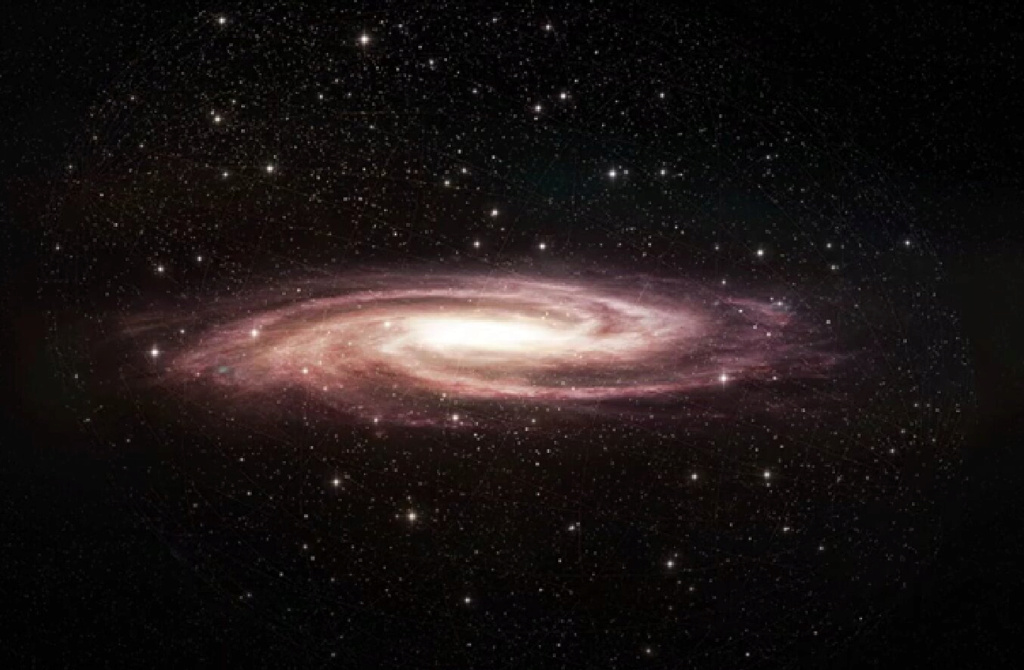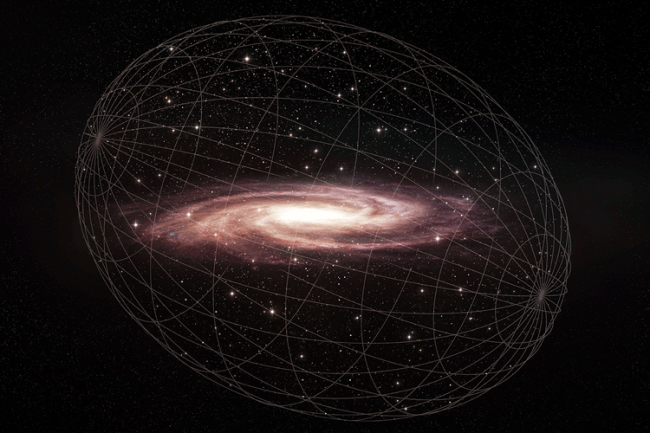Astronomers reveal the true shape of the Milky Way's halo

Did you think our galaxy's halo looked like a starry cloud line? You are both wrong and right. Everything actually depends on our position in space. In view of recent discoveries, this stellar halo would have a different shape from what we thought.
You are comfortably lying in the grass on a balmy summer night, facing the halo of the Milky Way , thinking about your life as a little ant in this cosmic immensity when suddenly a question arises: what does the Milky Way really
? ?look like in fact
A different form of star halo
Seen from Earth, our galaxy looks like a large luminous ring dividing the sky in two as if it covered our planet with these large arms. Looks like a large contrail in the form of star fog . But beyond the poetry that the stars inspire in us, astronomers have wondered what our galactic home really looked like if we moved away from the Earth. The answer here!

It was long thought that the stellar halo that surrounded our planet was spherical in shape. But it would seem, in view of recent discoveries, that this cluster of stars, dark matter and gas actually has a rather inclined and oblong shape (longer than wide, a bit like a bean in a way).
The Halo and the Galaxy
The results of these observations reported in the Astronomical Journal teach us more about this halo which is only a small part of our galaxy. In particular that this non-spherical shape means that it is not visible everywhere in the same way.
According to Charles Conroy, co-author of the study and professor of astronomy, this stellar halo that we see from Earth's perspective is part of a larger whole that is the wider galactic halo. To be more precise, the Solar System is located on the outer disk of the galaxy but not to the point of being on the edge of the disk: the wide galactic halo therefore.
Barred spiral galaxy and dark matter
The latter is made up largely of invisible dark matter . In view of the results of this study, the stellar halo of the galaxy would have been born from the meeting, 7 to 10 billion years ago, of a single dwarf galaxy with a larger galaxy. The little one then tore itself apart and thus dispersed the stars it contained in a large halo .
This form of stellar halo is closely related to the group to which our galaxy belongs. This belongs to the subgroup of barred spiral galaxies. In this form, the spiral arms do not emerge directly from it but from the star bar in the center of it . This form of system was established by Edwin Hubble in his Classification: Hubble Sequence .
Source:websites

